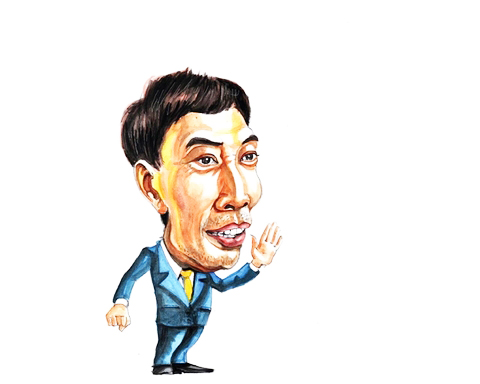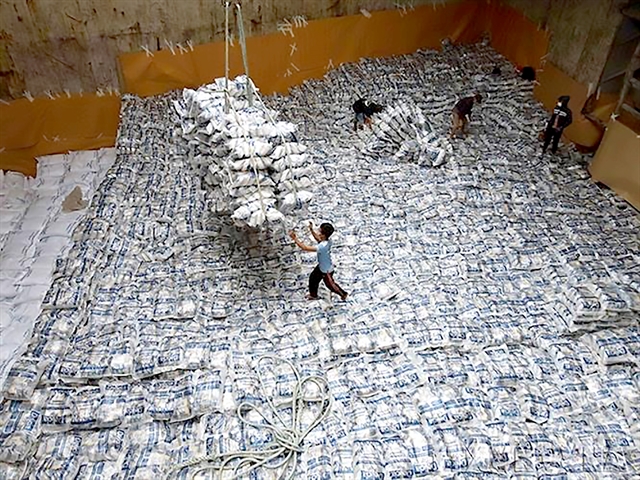 Economy
Economy

 |
Võ Trí Thành*
Since establishing diplomatic relations in October 1990, Việt Nam has become one of the EU’s main partners in Southeast Asia. The EU and Việt Nam have since fostered multifaceted cooperation in areas such as political, security, and development issues and especially trade and investment.
After the establishment of diplomatic ties and the opening of the European Commission Delegation, an important milestone in the EU-Việt Nam bilateral relations was the signing of an EU-Việt Nam Framework Cooperation Agreement in 1995 which entered into force on June 1, 1996 and then was upgraded into the EU-Việt Nam Framework Agreement on Comprehensive Partnership and Cooperation (PCA) in 2012 .
The entry into force of the EU-Việt Nam Free Trade Agreement (EVFTA) in August 2020 – the most ambitious and comprehensive agreement that the EU has ever concluded with a developing country – is a step further in the development of bilateral relations after three decades, presents a win-win relationship for both Việt Nam and EU, and is deemed a “highway” connecting the bloc and the Southeast Asian country.
Việt Nam has become the EU’s second biggest trading partner in ASEAN after Singapore while the EU is Việt Nam’s fourth largest trading partner after China, South Korea and the US.
The new-generation trade agreement has helped deepen and widen Việt Nam’s economic integration, facilitate trade liberalisation, create new opportunities for growth and sustainable, green, and inclusive development on both sides as well as boost the realisation of environmental commitments.
Compared to those of other free trade agreements Việt Nam has signed, direct impacts of the EVFTA on the growth of GDP and on exports are more significant because the room for tariff reduction given the current tariff schedules of both sides, coupled with the size of market that applies reduced tariffs, are far larger than any signed FTAs.
When the EVFTA came into effect, the EU eliminated import duties on about 85 per cent of tariff lines, equivalent to 70.3 per cent of Việt Nam’s exports to the EU. After seven years, the EU will eliminate import duties on 99.2 per cent of tariff lines, equivalent to 99.7 per cent of the country’s exports. For the remaining 0.3 per cent of exports, the EU commits to giving Việt Nam a tariff quota with an import duty of zero per cent.
A World Bank report released in May 2020 showed that full implementation of the EVFTA could increase Việt Nam’s GDP by 2.4 per cent, boost exports by 12 per cent and lift an additional 0.1-0.8 million out of poverty by 2030. In addition, if the EVFTA and Comprehensive and Progressive Agreement for Trans-Pacific Partnership (CPTPP) are simultaneously implemented, the country’s GDP could increase by up to 3.2 per cent in the next decade.
Besides, the agreement is expected to help promote high-quality investment between Việt Nam and the EU and be a catalyst for the improvement of legal framework (the Law on Enterprises, Investment Law, Labour Code) and investment environment though the job is a requirement by Việt Nam itself.
From September 2020 to September 2021, there were additional 164 projects invested by the EU, bringing the total number of projects to 2,242 and total capital poured into the country worth US$22.24 billion.
An upturn has been seen in investment from the Netherlands (26 per cent), Sweden (63 per cent), and Denmark (240 per cent). Notably, Lego Group of Denmark has recently invested in a $1 billion project in southern Bình Dương Province.
The EVFTA has also helped diversify markets and minimise risks under the circumstance of global uncertainties caused by geopolitical tensions and conflicts and the COVID-19 pandemic.
 |
| Rice packages of the Vietnam Southern Food Corporation -JSC (Vinafood 2) are loaded for export at the Sài Gòn Port. — VNA/VNS Photo Vũ Sinh |
Since the EVFTA took effect, Việt Nam has gradually gained a stronger foothold in the EU market despite the latter’s high quality requirements and the crippling impact of the COVID-19 pandemic which started ravaging economies in early 2020.
Việt Nam’s exports to the EU increased 6.2 per cent year on year to $39.75 billion in the first year after the EVFTA took effect (from August 2020 to July 2021). The modest increase was attributed to the supply chain disruption caused by the pandemic. However, ten months into the second year of the agreement (from August 2021 to May 2022), Việt Nam earned $36.8 billion from exports to the EU, a surge of 39.17 per cent compared to the same period of the previous year as the country has adopted a flexible pandemic control and adaptation strategy.
Significant growth was seen in many of Việt Nam’s key export items, for example, textile-garment (16.7 per cent), rice (42.9 per cent), pepper (81.3 per cent), aquatic products (22.7 per cent), and machinery (20.9 per cent).
The percentage of Vietnamese exporters using certification of origin to reap preferential duties provided by the EVFTA expanded from 14.62 per cent in the first ten months of 2020 to 32 per cent in the first half of 2022, more than four-fold the number of exports to signatories of the CPTPP.
In the first seven months of this year, exports rose by more than 20 per cent and the country gained a trade surplus of $18.7 billion with the EU, a year on year surge of 41.5 per cent.
Challenges and recommendations
However, challenges remain ahead.
Though Việt Nam has made strong improvements in human resources, technology, trademarks, business environment as well as the legal framework for enforcement of standards, there are still a number of aspects that Việt Nam has yet to optimise from the deal, including expanding consumption markets within the EU, calling for more EU investment projects, increasing the quality of risk governance and creating impetus for services exportation.
Vietnamese goods in the EU still account for a small market share and are mainly distributed in several major countries such as the Netherlands, Germany, France and Italy.
Currently, Việt Nam is not yet a “hub” for EU investment as complying with investment protection regulations under the EU-Việt Nam Investment Protection Agreement (EVIPA) and improving the investment environment is still a challenge. Both intellectual property rights protection and enforcement and sustainable development conditions are crucial elements for the attraction and retention of EU FDI.
The country needs to focus on a green production environment, a digital environment and a comfortable living conditions for experts and workers. EU investors are bound by the highest standards for workers' rights and environmental protection, thereby contributing to the wellbeing and further development of the Vietnamese society and economy.
Hopefully, EU member countries will soon ratify the EVIPA so that more EU investors are keen to pour money into the country. Increased EU investments will allow Việt Nam to better integrate into global value chains, thereby diminishing the dependence of the country on its current main investors.
 |
| Shoes made for export to the EU at the Trường Xuân Shoes Co. Ltd in Ba Vì District of Hà Nội. Footwear is among Việt Nam's key export items to the EU market. — VNA/VNS Photo Trần Việt |
Being a developing nation, Việt Nam does not have advantages in many services sectors, thus suffering a large deficit in services trading. The country should learn from and take advantage of free trade agreements including the EVFTA to boost the development of tourism, logistics and telecommunications, thereby facilitate the services export and reduce the services trade deficit.
Related to risk management, policies should address the COVID-19 consequences and geopolitical and trade tension on a longer term so as to enhance the country’s resilience to volatility.
In the longer term, the combined impacts of COVID-19 and trade tensions could lead to a deep restructuring of global value chains (GVCs). GVCs tends to be less dependent on some global production centres, such as China, paving a way for Việt Nam to step in to fill supply chain gaps.
Việt Nam could maximise benefits and minimise risks from this process if it can best reposition the country in the post-COVID-19 era. This requires stronger and proactive policy responses so that the country can build more sophisticated production capacity and increase exports toward more value-added and high-tech prioritisation, the World Bank report says.
In the long run, trade facilitation is a game changer, and Việt Nam should turn the COVID-19 challenges into an opportunity to stimulate appropriate reforms, the report highlights.
*Võ Trí Thành is a former vice-president of the Central Institute for Economic Management (CIEM) and a member of the National Financial and Monetary Policy Advisory Council. The holder of a doctorate in economics from the Australian National University, Thành mainly undertakes research and provides consultation on issues related to macroeconomic policies, trade liberalisation and international economic integration. Other areas of interest include institutional reforms and financial systems.




